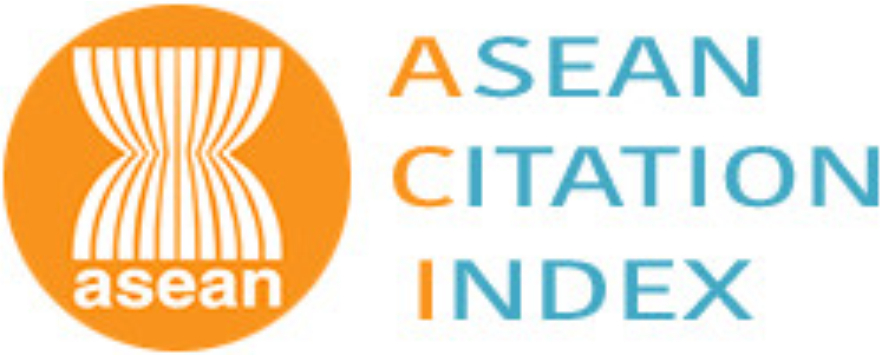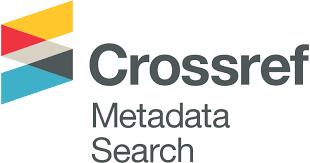Nghiên cứu, phát triển mô hình huấn luyện an toàn điện cao áp trên tàu thủy dựa trên công nghệ thực tế ảo và mạng nơ-ron nhân tạo
Email:
hung.ddt@vimaru.edu.vn
Từ khóa:
an toàn điện cao áp, mạng nơ-ron nhân tạo, điện áp phóng điện cao áp, an toàn điện cho tàu thủy, mô phỏng thực tế ảo
Tóm tắt
Hiện nay, vận chuyển hàng hóa bằng đường thủy chiếm tỷ trọng cao và đóng vai trò quan trọng trong thương mại xuất khẩu, nhập khẩu trên thế giới và Việt Nam. Bên cạnh đó, xu hướng hiện đại hóa đội tàu dẫn đến các thiết bị điện sử dụng điện cao áp đang triển khai trên các tàu thủy đóng mới với mục đích tăng cường khả năng tải trọng. Tuy nhiên, việc tiếp xúc và làm việc với các thiết bị điện cao áp tiềm ẩn các nguy cơ mất an toàn đối với thuyền viên và yêu cầu họ phải có các kĩ năng, kiến thức chuyên môn về an toàn điện. Bài báo này đề xuất phương pháp thử nghiệm, thu thập tạo bộ dữ liệu điện áp phóng điện cao áp trên thiết bị TERCO dựa trên điều kiện môi trường thực tế trên tàu thủy. Đồng thời, xây dựng một mô hình đánh giá, mô phỏng huấn luyện an toàn điện cao áp theo tiêu chuẩn IMO dựa trên công nghệ thực tế ảo trên nền tảng Unity 3D kết hợp với mạng nơ-ron nhân tạo (ANN) Bootstrapping cho phép thuyền viên thực hành đảm bảo an toàn tính mạng trong quá trình huấn luyện. Kết quả bước đầu nghiên cứu đã cho thấy các tính năng vượt trội hơn so với phương pháp đào tạo truyền thống hiện nay như sát với thực tế, cho phép điều chỉnh kịch bản đào tạo. Dựa trên kết quả đào tạo thuyền viên có thể đánh giá hiệu suất của hệ thống đạt 90 % đáp ứng hiệu quả các tiêu chí cơ bản trong đào tạo an toàn điện cao áp cho thuyền viên hiện nayTài liệu tham khảo
[1]. B. Bei et al., Challenges and Solutions of Ship Power System Electrification, Energies, 17 (2024) 13. https://doi.org/10.3390/en17133311
[2]. G. Ling, C. Han, Z. Yang, J. He, Energy consumption and emission analysis for electric container ships, Ocean and Coastal Management, 261 (2025) 107505. https://doi.org/10.1016/j.ocecoaman.2024.107505
[3]. J. Wen, Y. Liu, M. Zhang, X. Li, Intelligent control for rapidity and security of all-electric ships gas turbine under complex mutation load using optimized neural network, Applied Thermal Engineering, 248 (2024) 123120. https://doi.org/10.1016/j.applthermaleng.2024.123120
[4]. M. Im, H.-S. Sin, A study on the training of maritime cadets of increasing high voltage ships, Transactions of KSME C Industrial Technology Innovation, 3 (2015) 29–36. https://doi.org/10.3795/KSME-C.2015.3.1.029
[5]. H. Stefan, M. Mortimer, B. Horan, S. McMillan, How effective is virtual reality for electrical safety training? Evaluating trainees’ reactions, learning, and training duration, Journal of Safety Research, 90 (2024) 48–61. https://doi.org/10.1016/j.jsr.2024.06.002
[6]. A. Haiba, A. Eliwa, Artificial neural network analysis for classification of defected high voltage ceramic insulators, Scientific Reports, 14 (2024) 1–14. https://doi.org/10.1038/s41598-024-51860-8
[7]. M. T. K. Niazi, A. Arshad, J. Ahmad, F. Alqahtani, F. Baothman, F. Abu-Amara, Prediction of critical flashover voltage of high voltage insulators leveraging bootstrap neural network, Electronics, 9 (2020) 1620. https://doi.org/10.3390/electronics9101620
[8]. F. Bracco, M. Masini, D. Glowinski, T. Piccinno, S. Schaerlaeken, Simulation as a training method for electricity workers’ safety, International Journal of Environmental Research and Public Health, 18 (2021) 4. https://doi.org/10.3390/ijerph18041591
[9]. H. J. Seo, G. M. Park, M. Son, A.-J. Hong, Establishment of virtual-reality-based safety education and training system for safety engagement, Education Sciences, 11 (2021) 12. https://doi.org/10.3390/educsci11120786
[10]. Wärtsilä, High Voltage Training Breaker. https://www.wartsila.com/marine/products/simulation-and-training/technological-simulators/high-voltage-training-breaker/, 2024, truy cập ngày 05 tháng 5 năm 2025
[11]. Sensorama, VR Simulator for High Voltage Electrical Safety. https://vr.sensoramalab.com/case-studies/virtual-reality-simulator-for-high-voltage-electrical-safety-training, 2024, truy cập ngày 06 tháng 5 năm 2025
[12]. Trần Văn Tớp, Phạm Thành Chung, Vật liệu kỹ thuật điện, NXB Bách Khoa Hà Nội, Hà Nội, 2025.
[13]. Hoàng Việt, Kỹ Thuật Điện Cao Áp Tập 1 - Kỹ Thuật Cách Điện, NXB Đại Học Quốc Gia, 2003
[14]. K. Belhouchet, A. Bayadi, M. E. Bendib, Artificial neural networks (ANN) and genetic algorithm modeling and identification of arc parameter in insulators flashover voltage and leakage current, Proceedings of the 2015 4th International Conference on Electrical Engineering (ICEE), 2015, pp. 1–6. https://doi.org/10.1109/INTEE.2015.7416698
[15]. A. Arshad, A. Nekahi, S. G. McMeekin, M. Farzaneh, Flashover characteristics of silicone rubber sheets under various environmental conditions, Energies, 9 (2016) 683. https://doi.org/10.3390/en9090683
[16]. B. Zegnini, A. H. Mahdjoubi, M. Belkheiri, A least squares support vector machines (LS-SVM) approach for predicting critical flashover voltage of polluted insulators, Proceedings of the 2011 Annual Report Conference on Electrical Insulation and Dielectric Phenomena (CEIDP), IEEE, Montréal, Canada, 2011, pp. 403–406. https://doi.org/10.1109/CEIDP.2011.6232652
[17]. Tổ chức Hàng hải Quốc tế (IMO), Hướng dẫn tạm thời MSC.1/Circ.1675 – An toàn kết nối nguồn điện bờ (OPS) cho tàu thủy, https://www.skanregistry.com/uploads/download-directory/pdf/319/document.pdf , 2023, truy cập ngày 08 tháng 5 năm 2025
[18]. Tổ chức Hàng hải Quốc tế (IMO), Quy định 45 SOLAS – Phòng ngừa sốc, cháy và các nguy cơ điện khác, https://www.imorules.com/GUID-CF22521F-7754-48E5-B2E2-A99490CE7D4B.html, 2024, truy cập ngày 08 tháng 5 năm 2025
[19]. Tổ chức Hàng hải Quốc tế (IMO), Hướng dẫn về huấn luyện an toàn trên tàu thủy sử dụng công nghệ thực tế ảo (VR), https://www.imo.org/en/MediaCentre/Pages/WhatsNew-1811.aspx , 2023, truy cập ngày 08 tháng 5 năm 2025
[2]. G. Ling, C. Han, Z. Yang, J. He, Energy consumption and emission analysis for electric container ships, Ocean and Coastal Management, 261 (2025) 107505. https://doi.org/10.1016/j.ocecoaman.2024.107505
[3]. J. Wen, Y. Liu, M. Zhang, X. Li, Intelligent control for rapidity and security of all-electric ships gas turbine under complex mutation load using optimized neural network, Applied Thermal Engineering, 248 (2024) 123120. https://doi.org/10.1016/j.applthermaleng.2024.123120
[4]. M. Im, H.-S. Sin, A study on the training of maritime cadets of increasing high voltage ships, Transactions of KSME C Industrial Technology Innovation, 3 (2015) 29–36. https://doi.org/10.3795/KSME-C.2015.3.1.029
[5]. H. Stefan, M. Mortimer, B. Horan, S. McMillan, How effective is virtual reality for electrical safety training? Evaluating trainees’ reactions, learning, and training duration, Journal of Safety Research, 90 (2024) 48–61. https://doi.org/10.1016/j.jsr.2024.06.002
[6]. A. Haiba, A. Eliwa, Artificial neural network analysis for classification of defected high voltage ceramic insulators, Scientific Reports, 14 (2024) 1–14. https://doi.org/10.1038/s41598-024-51860-8
[7]. M. T. K. Niazi, A. Arshad, J. Ahmad, F. Alqahtani, F. Baothman, F. Abu-Amara, Prediction of critical flashover voltage of high voltage insulators leveraging bootstrap neural network, Electronics, 9 (2020) 1620. https://doi.org/10.3390/electronics9101620
[8]. F. Bracco, M. Masini, D. Glowinski, T. Piccinno, S. Schaerlaeken, Simulation as a training method for electricity workers’ safety, International Journal of Environmental Research and Public Health, 18 (2021) 4. https://doi.org/10.3390/ijerph18041591
[9]. H. J. Seo, G. M. Park, M. Son, A.-J. Hong, Establishment of virtual-reality-based safety education and training system for safety engagement, Education Sciences, 11 (2021) 12. https://doi.org/10.3390/educsci11120786
[10]. Wärtsilä, High Voltage Training Breaker. https://www.wartsila.com/marine/products/simulation-and-training/technological-simulators/high-voltage-training-breaker/, 2024, truy cập ngày 05 tháng 5 năm 2025
[11]. Sensorama, VR Simulator for High Voltage Electrical Safety. https://vr.sensoramalab.com/case-studies/virtual-reality-simulator-for-high-voltage-electrical-safety-training, 2024, truy cập ngày 06 tháng 5 năm 2025
[12]. Trần Văn Tớp, Phạm Thành Chung, Vật liệu kỹ thuật điện, NXB Bách Khoa Hà Nội, Hà Nội, 2025.
[13]. Hoàng Việt, Kỹ Thuật Điện Cao Áp Tập 1 - Kỹ Thuật Cách Điện, NXB Đại Học Quốc Gia, 2003
[14]. K. Belhouchet, A. Bayadi, M. E. Bendib, Artificial neural networks (ANN) and genetic algorithm modeling and identification of arc parameter in insulators flashover voltage and leakage current, Proceedings of the 2015 4th International Conference on Electrical Engineering (ICEE), 2015, pp. 1–6. https://doi.org/10.1109/INTEE.2015.7416698
[15]. A. Arshad, A. Nekahi, S. G. McMeekin, M. Farzaneh, Flashover characteristics of silicone rubber sheets under various environmental conditions, Energies, 9 (2016) 683. https://doi.org/10.3390/en9090683
[16]. B. Zegnini, A. H. Mahdjoubi, M. Belkheiri, A least squares support vector machines (LS-SVM) approach for predicting critical flashover voltage of polluted insulators, Proceedings of the 2011 Annual Report Conference on Electrical Insulation and Dielectric Phenomena (CEIDP), IEEE, Montréal, Canada, 2011, pp. 403–406. https://doi.org/10.1109/CEIDP.2011.6232652
[17]. Tổ chức Hàng hải Quốc tế (IMO), Hướng dẫn tạm thời MSC.1/Circ.1675 – An toàn kết nối nguồn điện bờ (OPS) cho tàu thủy, https://www.skanregistry.com/uploads/download-directory/pdf/319/document.pdf , 2023, truy cập ngày 08 tháng 5 năm 2025
[18]. Tổ chức Hàng hải Quốc tế (IMO), Quy định 45 SOLAS – Phòng ngừa sốc, cháy và các nguy cơ điện khác, https://www.imorules.com/GUID-CF22521F-7754-48E5-B2E2-A99490CE7D4B.html, 2024, truy cập ngày 08 tháng 5 năm 2025
[19]. Tổ chức Hàng hải Quốc tế (IMO), Hướng dẫn về huấn luyện an toàn trên tàu thủy sử dụng công nghệ thực tế ảo (VR), https://www.imo.org/en/MediaCentre/Pages/WhatsNew-1811.aspx , 2023, truy cập ngày 08 tháng 5 năm 2025
Tải xuống
Chưa có dữ liệu thống kê

Nhận bài
11/05/2025
Nhận bài sửa
25/09/2025
Chấp nhận đăng
06/10/2025
Xuất bản
15/10/2025
Chuyên mục
Công trình khoa học
Kiểu trích dẫn
Nguyễn Văn, H., & Nguyễn Thanh, V. (1760461200). Nghiên cứu, phát triển mô hình huấn luyện an toàn điện cao áp trên tàu thủy dựa trên công nghệ thực tế ảo và mạng nơ-ron nhân tạo. Tạp Chí Khoa Học Giao Thông Vận Tải, 76(8), 1034-1048. https://doi.org/10.47869/tcsj.76.8.1









